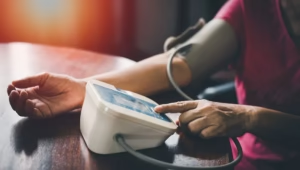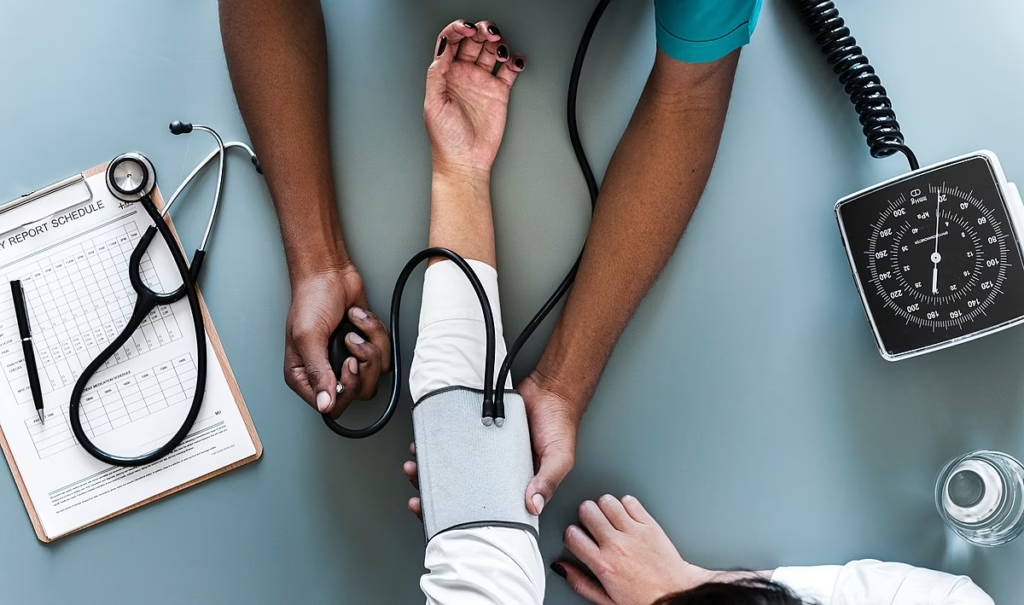Blood Pressure Monitoring is Crucial for Health
You’re sitting in your doctor’s office, and they’re about to take your blood pressure. That familiar squeeze of the cuff around your arm might seem like a routine inconvenience, but it’s one of the most important health checks you’ll ever receive. I’ve spent years studying cardiovascular health, and I can tell you that this simple measurement could quite literally save your life.
The Silent Guardian: Understanding Blood Pressure’s Role in Your Health
Think of your blood pressure as the silent guardian of your body’s highway system. Just as too much or too little pressure in your car’s tires can lead to dangerous driving conditions, your blood pressure needs to be just right to keep your body running smoothly. Let me break this down in a way that hits close to home.
What Those Numbers Mean
When your doctor says “120 over 80,” they’re not giving you a mysterious code – they’re providing vital information about your cardiovascular health. Let’s decode these numbers:
- Systolic Pressure (The Top Number): This measures the force of blood against your artery walls when your heart beats
- Diastolic Pressure (The Bottom Number): This shows the pressure between beats when your heart is resting
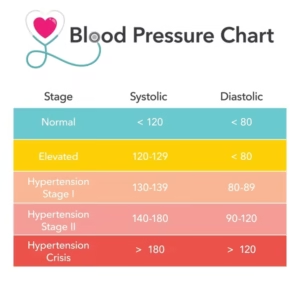
Understanding Blood Pressure Ranges
Let’s look at what different blood pressure readings mean for your health:
| Blood Pressure Category | Systolic (mm Hg) | Diastolic (mm Hg) | What It Means |
|---|---|---|---|
| Normal | Less than 120 | Less than 80 | Optimal range |
| Elevated | 120-129 | Less than 80 | Time for lifestyle changes |
| Stage 1 Hypertension | 130-139 | 80-89 | Medical attention needed |
| Stage 2 Hypertension | 140 or higher | 90 or higher | Serious medical concern |
| Hypertensive Crisis | Higher than 180 | Higher than 120 | Emergency |
Why Regular Monitoring Matters More Than You Think
I remember a patient who felt perfectly fine but discovered during a routine check that their blood pressure was dangerously high. This discovery led to early intervention that potentially prevented a stroke. Here’s why monitoring is crucial:
The Silent Nature of High Blood Pressure
High blood pressure earned its nickname “the silent killer” for good reason. Unlike a headache or a fever, it rarely announces its presence with obvious symptoms. By the time you feel something’s wrong, significant damage might already be done.
The Ripple Effect on Your Body
Uncontrolled high blood pressure can affect virtually every organ in your body:
- Heart: Increased risk of heart attack and heart failure
- Brain: Higher chance of stroke and cognitive decline
- Kidneys: Potential kidney damage or failure
- Eyes: Risk of vision loss through damaged blood vessels
- Blood Vessels: Hardening and narrowing of arteries
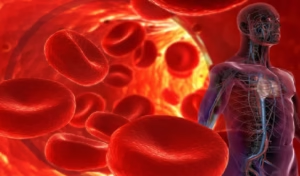
Taking Control: Your Guide to Home Blood Pressure Monitoring
Choosing the Right Monitor
Just as you wouldn’t trust a broken compass for navigation, you need a reliable blood pressure monitor. Here are my top recommendations based on extensive research and user feedback:
Top Monitors for Different Needs
- Best Overall: Omron Platinum Blood Pressure Monitor
- Why I recommend it: Exceptional accuracy and multiple user profiles
- Perfect for: Families needing to track multiple members
- Key features: Stores up to 100 readings per user
- Best Smart Monitor: Withings BPM Connect
- Standout feature: Wireless sync with a smartphone app
- Ideal for: Tech-savvy users who want detailed tracking
- Added benefit: Easy sharing of results with healthcare providers
Proper Monitoring Technique
The accuracy of your readings depends heavily on proper technique. Here’s my step-by-step guide:
- Prepare Properly
- Rest for 5 minutes before measuring
- Empty your bladder
- Avoid caffeine and exercise for 30 minutes prior
- Sit with your back supported and feet flat on the floor
- Position the Cuff Correctly
- Place on bare skin, not over clothing
- Position about an inch above your elbow
- Keep your arm at heart level
- Take Multiple Readings
- Wait 1-2 minutes between readings
- Take 2-3 measurements each time
- Record all readings with date and time
Lifestyle Changes That Make a Difference
Let me share some practical ways to maintain healthy blood pressure that I’ve seen work wonders for countless people:
Dietary Modifications
The DASH diet (Dietary Approaches to Stop Hypertension) has shown remarkable results:
| Food Category | Recommended Servings | Why It Helps |
|---|---|---|
| Vegetables | 4-5 per day | Rich in potassium and fiber |
| Fruits | 4-5 per day | Natural source of antioxidants |
| Whole Grains | 6-8 per day | Promotes heart health |
| Lean Proteins | 6 or fewer per day | Supports muscle health |
| Low-fat Dairy | 2-3 per day | Calcium and vitamin D |

Physical Activity
I always tell my readers that exercise doesn’t have to mean running marathons. Start with:
- 30 minutes of brisk walking most days
- Swimming or water aerobics
- Gentle yoga or tai chi
- Garden work or house cleaning
[Insert image: People engaged in various forms of moderate exercise]
Understanding Risk Factors and Prevention
Modifiable Risk Factors
These are factors you can control:
- Excess Weight
- Solution: Maintain a healthy BMI through diet and exercise
- Impact: Even a 5-10% weight loss can significantly lower blood pressure
- High Sodium Intake
- Solution: Limit sodium to 2,300mg per day
- Tip: Read food labels and choose low-sodium alternatives
- Sedentary Lifestyle
- Solution: Incorporate regular physical activity
- Goal: Aim for 150 minutes of moderate exercise weekly
Non-Modifiable Risk Factors
Understanding these helps you know when to be extra vigilant:
- Age (risk increases with age)
- Family history
- Gender-specific risks
- Ethnic background
Special Considerations for Different Groups
Older Adults
As we age, blood pressure management becomes increasingly important:
- More frequent monitoring may be needed
- Greater attention to medication interactions
- Balance risk of falls with blood pressure goals
Pregnant Women
Pregnancy brings unique blood pressure considerations:
- Regular monitoring is crucial
- Different target ranges apply
- Preeclampsia risk needs careful attention
Children and Adolescents
Yes, young people need monitoring too:
- Annual checks recommended
- Different normal ranges based on age and height
- Early intervention prevents long-term issues
Technology and Blood Pressure Management
Smart Monitoring Devices
The future of blood pressure monitoring is here:
- Smartphone-Connected Devices
- Real-time tracking
- Data sharing capabilities
- Trend analysis
- Wearable Technology
- Continuous monitoring options
- Activity correlation
- Stress level tracking
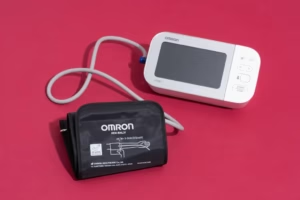
Apps and Digital Tools
Leverage technology for better health management:
- Blood pressure tracking apps
- Medication reminder systems
- Digital health journals
When to Seek Medical Attention
Red Flags That Shouldn’t Be Ignored
Immediate medical attention is needed if you experience:
- Readings above 180/120 mm Hg
- Severe headaches with high readings
- Chest pain or difficulty breathing
- Vision problems
- Confusion or anxiety
Taking Action: Your Next Steps
Creating Your Monitoring Schedule
Based on your current health status:
| Risk Level | Monitoring Frequency | Additional Considerations |
|---|---|---|
| Normal BP | Once a year | Regular check-ups |
| Elevated BP | Every 3-6 months | Lifestyle modifications |
| Hypertension | Weekly or daily | Medication management |
| Pregnancy | As advised by a doctor | Special monitoring needs |
Building Your Support System
Success in blood pressure management often requires:
- Healthcare Team
- Primary care physician
- Cardiologist (if needed)
- Nutritionist or dietitian
- Family and Friends
- Share your goals
- Ask for support
- Create accountability
Conclusion: Your Path to Better Health
Remember, monitoring your blood pressure isn’t just about numbers – it’s about taking control of your health destiny. Start with small steps: get a reliable monitor, establish a routine, and make gradual lifestyle changes. Your future self will thank you for the attention you pay to your blood pressure today.
Don’t wait for a wake-up call. Take action now by:
- Scheduling a blood pressure check with your healthcare provider
- Investing in a quality home monitoring device
- Starting a blood pressure journal
- Making one healthy lifestyle change this week
